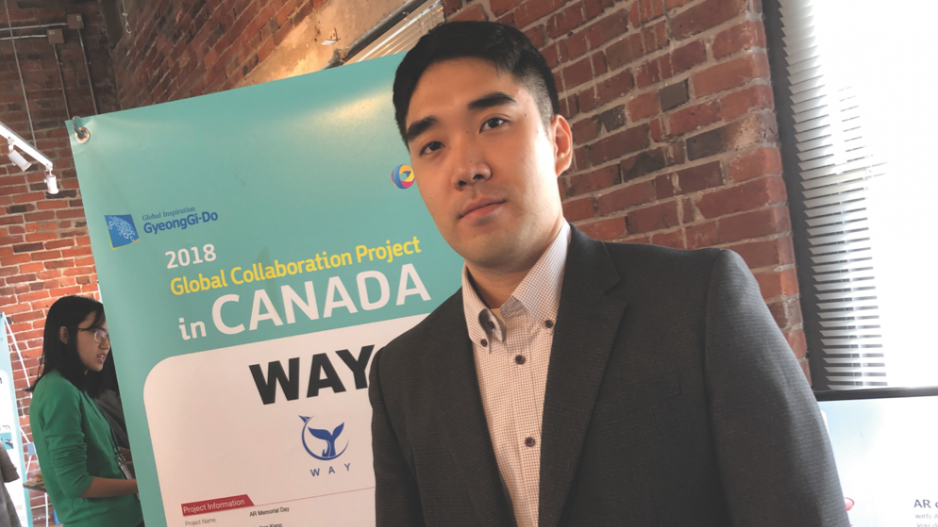A South Korean company wants to inject augmented reality (AR) technology into North American memorial sites and cemeteries as a way for the funeral industry to cater to consumers who are increasingly dependent on mobile devices.
Representatives from Way Co. presented the startup’s business concept to the Vancouver audience at the BC Tech Association’s Cube facility on September 24, and company sales director Jaehee Kang said he is optimistic the unorthodox idea will find interest in the Lower Mainland’s burgeoning mixed reality sector.
“When I go to the parks here, I see a lot of plaques on benches, on some walls and on a lot of different places that serve as mini-memorials. And with our technology, they can see their loved ones whenever they go visit. I think that can be very powerful. There are a lot of places for remembrance … but there’s not enough content to fill those spaces. Right now, there are just pictures, tombstones, maybe a name tag. We are focusing on the possibilities – through technology – as a way for people to keep their memories and to see those memories when they want to.”
Way’s AR Memorial Day Android application mixes image recognition and GPS. It would allow users visiting a gravesite or a memorial to upload photos, videos and 3D graphics relating to the deceased onto the app’s servers. Then, when the user revisits the site and scans the memorial using Way’s app, the photo and video contents are placed on the user’s mobile device, either in the foreground or the background of the memorial.
The use of AR at memorial sites in South Korea has been increasing, Way representatives said, given that the country has shifted heavily toward cremation services, which has resulted in either a lack of gravesites or a dramatically smaller physical presence for memorial markers.
A Korea Bizwire report in March noted that cremation rates have quadrupled in the 20 years since 1994, going from 20% of funeral services to more than 80% in 2015.
The report said South Korea has 342 crematoriums and will build 52 more within five years.
Given the lack of physical space needed to house cremated remains, Kang said Korean consumers are now looking for ways to increase the scale of their loved ones’ memorials through AR.
Kang added that younger Koreans’ adoption of mobile technology has made this shift almost a no-brainer in that market.
While Korea’s AR market is large, Way is already casting its gaze on North America via Vancouver. Earlier this year, B.C. was chosen as one of three destinations by the South Korean province of Gyeonggi for “global collaboration” in AR and VR sectors (New York and Manchester, U.K., are the others), and officials said they aim to take advantage of B.C.’s industry-friendly regulations to secure a foothold on the West Coast.
Kang admitted he’s unsure how North America’s US$22 billion funeral market (US$2 billion for Canada) will respond to AR technology. He said Way is marketing AR Memorial Day directly to memorial park owners and operators in South Korea, where the industry is dominated by large corporations, although he added that the app could be marketed directly to consumers in North America.
If Way decides to market the app to cemetery operators in North America, the company plans to sell the product as a way for those operators to create another funeral business revenue stream.
Kang said that Way is hoping to find a partner in B.C. to help with app development and localization; it also wants to connect with Canadian and American cemeteries and memorial park operators.
He added that, while it is technologically possible to make the AR memorials visible to anyone visiting a gravesite, which would essentially transform the AR memorials into a public digital “tombstone,” there are no plans to implement that measure, given that families of the deceased may view these videos and photos as personal.
“It is possible to do many things technologically, but there are always privacy concerns,” Kang said. “It’s private information, and maybe people don’t want to share it with the public; they just want to have it within their families. People have to be comfortable in order for a service like ours to succeed.”




